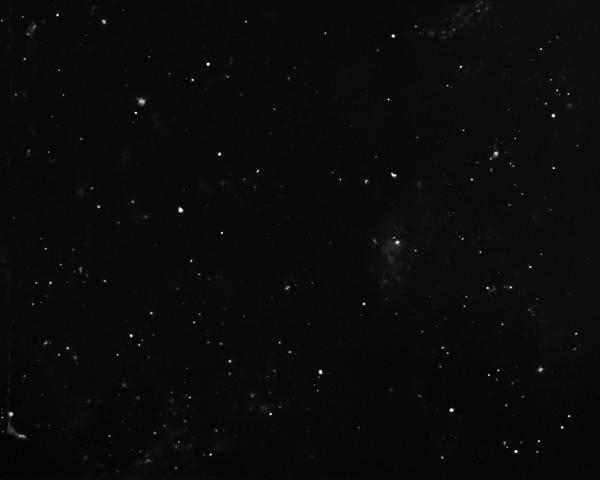Redwood (1958), 412 kt. Lawrence Livermore National Laboratory.
Engaging with Nuclear Visualities
The radical contact print demonstrates the technical and ontological challenges posed to photography, and preserves the visual elements of atomic imagery as pure signs that resist incorporation into static networks of meaning. Such materials as the burnt photographs taken in the first few moments of the Trinity detonation and Vladimir Shevchenko’s Chernobyl film cast doubt on the integrity of the signs that make up the atomic sublime—the mushroom cloud, the expansive landscape, the golden light, the spectacle in the sky as opposed to the destruction on the Earth. Contemporary artists evoke the atomic bomb’s challenge to photography, as well as the instability of the signs of the atomic sublime, to investigate humanity’s involvement in the global legacy of nuclear technology. Some, such as the Japanese photographer Takeda Shimpei, make use of the photo-active properties of radioactivity to evoke issues of scale and memory. Others, like the Chinese artist Cai Guo-Qiang, work directly with the unstable nature of atomic signs, decontextualizing and recontextualizing them to highlight the fluidity of the meaning they carry.
Takeda Shimpei and Takashi Homma
References
[Coming Soon]





